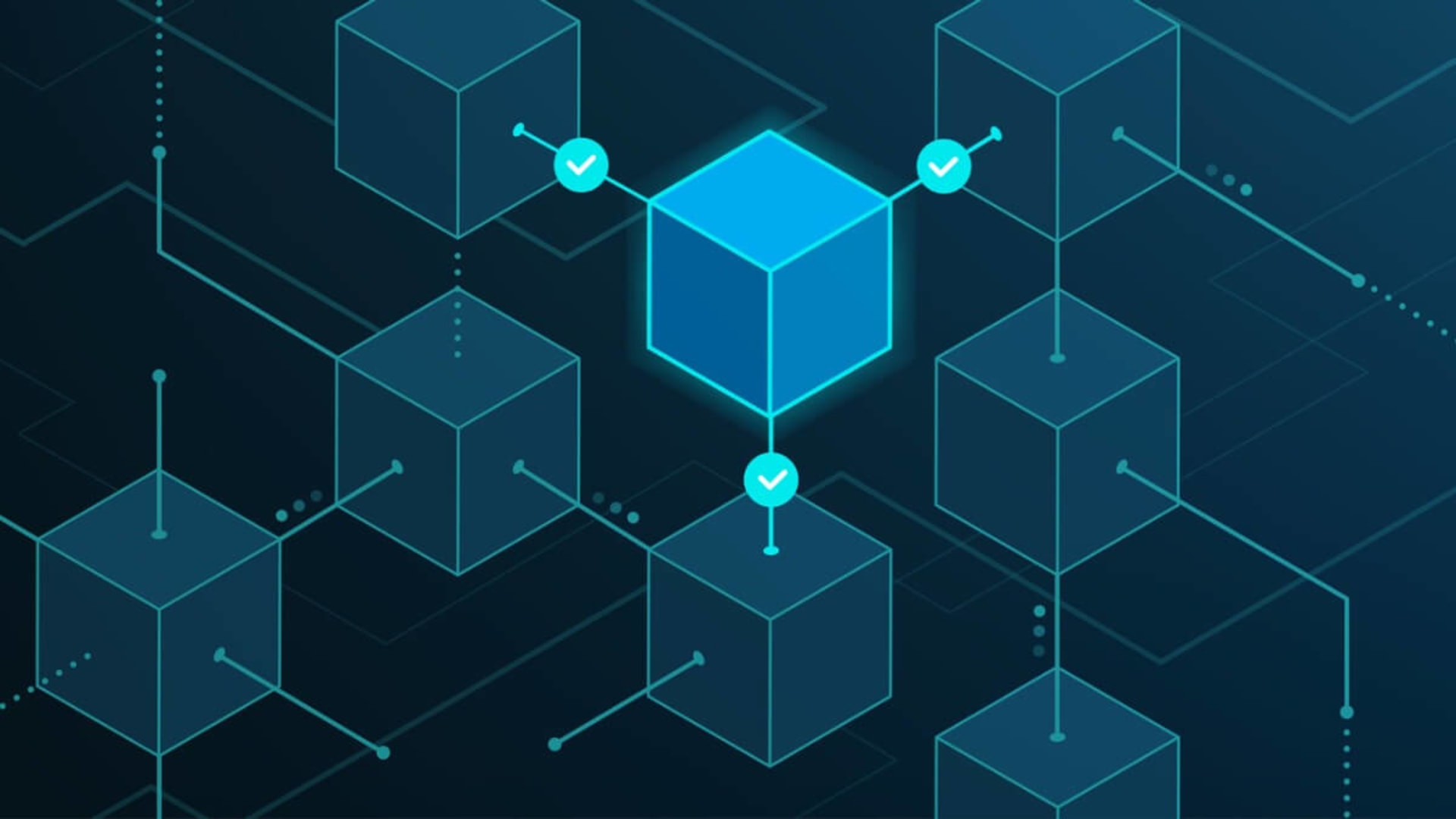Blockchain is a distributed database that stores all the information about cryptocurrency transactions. This means that no single person or institution has control over the data. The data is also public, so anyone can see it. This is why it’s often called a public digital ledger. And while there is more to it than that, it serves as a good mental image to understand how a blockchain works.

Leaving aside the environmental issues and the crypto scams (and trust me, we’ll get to it), blockchain can be used for a variety of purposes, including tracking ownership of assets, recording events and transactions, and verifying identity — all within an easily auditable framework. The benefits of this are obvious: it makes it very difficult for anyone to commit fraud, and it makes the system more transparent.
Each entry in the chain contains a cryptographic hash of the previous block, so it is impossible to modify any information in the blockchain without changing all subsequent blocks. Accomplishing that would require an enormous amount of computing power, and the process would almost immediately be noticed by users of the blockchain.
By all metrics, blockchain development are an interesting technology that under the right circumstances can be implemented as a solution for your business. And like most cloud-based services, there are plenty of options available, including the blockchain as a service (BaaS) model. Let’s go over the basics and figure out what you stand to gain by incorporating blockchain in your projects.
What Is Blockchain as a Service?
Understanding Blockchain
The first blockchain was conceptualized by an anonymous person or group known as Satoshi Nakamoto in 2008. Nakamoto combined established protocols such as Hashcash and PGP to create a system that does not require any central authority for transaction verification.
Instead, transactions are verified by network nodes through cryptography and recorded in a public dispersed ledger (the blockchain). Bitcoin was the first practical implementation of blockchain technology. Since the birth of bitcoin, numerous other cryptocurrencies (such as Ethereum) have been created using similar protocols with various modifications. Blockchain technology has also been used for non-cryptocurrency applications such as decentralized data storage, supply chain management, and voting systems.
Verification is done traditionally through a process called proof of work (PoW). Here, computers work through a set of complicated mathematical problems in order to verify each transaction. It’s a competition-based model in which each worker (called a miner) competes to be the first one to answer a problem. The more miners trying to solve the same problem, the harder it becomes. This is because each miner needs to find a unique solution in order for their block of verified transactions to be accepted by the network and added onto the blockchain.

Miners are rewarded for their work, which incentivizes competition. And if you paid any attention to the world of bitcoin, you already know just how profitable mining can be. Unfortunately, this competition is also one of blockchain’s biggest concerns. Energy consumption is a key issue with proof-of-work systems. They require a large amount of energy to run, which can lead to high electricity costs. This has a major environmental impact. For example, the bitcoin blockchain consumes more power than the entire country of Ireland.
The problem isn’t so much the amount of energy, but rather the wasted energy. Remember that out of all the miners, only the first one who provides the answer is actually awarded; only their work mattered in the end. The rest of the energy could be seen as expended on security, but the truth of the matter is that you only needed that first miner to validate the transaction.
Some companies like Ethereum have migrated to a proof-of-stake (PoS) model in search of greener solutions. This is a system in which a cryptocurrency holder can mine or validate block transactions according to how much of the currency they hold. It works by allowing users to “stake” their coins in order to generate new blocks and receive a reward.
The more coins you stake, the greater your chances of generating a new block and receiving the associated reward. You can lose your stake if you are found to be validating fraudulent transactions or if the network forks and you end up on the wrong side of the fork. As such, miners are motivated to act in the best interests of the network.
We’ll talk a bit more about PoW versus PoS when we discuss the challenges of BaaS solutions. But for now, just keep in mind that this is a choice you have to eventually make.
Understanding “As a Service” Solutions
Everything as a service (XaaS) is a model in which businesses can access technology-enabled services over the internet. The term is often used to describe data backup, storage, and recovery services. But it can cover almost every conceivable technical solution that can be delivered as a service via the web. What makes XaaS stand out is its pay-per-use model ー businesses only pay for the services they use, when they need them.
XaaS is a cloud-based solution that delivers on-demand access to software and other digital resources over the internet. XaaS represents an alternative to traditional IT models in which companies purchase hardware, install it on site, and then manage it themselves. With XaaS, all of those functions are outsourced to third-party providers who deliver them as needed through the cloud.
Because there’s no upfront investment in hardware or software licenses, XaaS can offer considerable cost savings compared with traditional IT models ー especially for small businesses that don’t have their own dedicated IT staff. The pay-as-you go pricing model also makes XaaS attractive to cash-strapped startups and other organizations with limited budgets. And because most XaaS solutions are based on subscription plans, businesses can cancel or scale back their services at any time without incurring hefty termination fees ー another advantage over traditional IT arrangements where customers often find themselves locked into long-term contracts.
Putting It all Together
Blockchain as a service (BaaS) is a cloud-based service that allows companies to build and operate their own blockchain applications. BaaS is based on the software as a service (SaaS) model and works in a similar fashion. It allows customers to leverage cloud-based solutions to build, host, and operate their own blockchain apps and related functions on the blockchain.
At the same time, the cloud-based service provider keeps the infrastructure agile and operational. As a development in the greater blockchain ecosystem, BaaS is seen as boosting blockchain adoption across businesses. Major players in the BaaS space include:
Microsoft: Microsoft’s blockchain solution allows developers to create, deploy, and manage blockchain applications on the Azure platform. The service offers a variety of features that make it easy to develop and deploy blockchain applications, including templates for popular blockchain frameworks, integration with Azure services such as Active Directory and Key Vault, and support for multiple programming languages.
Amazon: AWS provides purpose-built tools to support your distinct needs, whether you need a centralized ledger database that maintains an immutable and cryptographically verifiable record of transactions, or a multi-party, fully managed blockchain network that helps eliminate intermediaries. More customers trust AWS for their blockchain and ledger technology workloads than any other cloud vendor. As much as 25% of Ethereum workloads operate on AWS. Enterprise customers for Hyperledger Fabric include Nestle, Sony Music, BMW, Sage, Guardian, DTCC, Workday, Klarna Bank, SGX, Legal & General, and Splunk.
R3: The R3 consortium launched a BaaS platform called Corda Enterprise in 2015. This solution is based on open source technology (but keep in mind that is not open source itself). This solution is designed for use in mission-critical environments such as banking and other highly regulated industries. It features enhanced security, scalability, and performance compared to the open source version of Corda. In addition, it comes with support for enterprise applications such as identity management, compliance monitoring, and auditing.
Paystand: Paystand is a company that provides a more efficient way to manage transactions for businesses. They aim to eliminate fees, digitize the cash cycle, and create a self-driving money experience for businesses. The company was founded in 2013 by Jeremy Almond and Scott Campbell. Inspired by pioneers taking sales and marketing into the cloud to become faster and more efficient, it touts itself as “The first Ethereum-based hybrid blockchain designed for B2B.”
Use Cases for Blockchain as a Service
Track and Trace
Track and trace is a system that allows you to follow the history of a product as it moves through the supply chain. This is important because it can help combat issues like counterfeit goods, compliance violations, delays, and waste. With a blockchain solution, entire networks of a supply chain can document updates to a single shared ledger, which provides total data visibility and a single source of truth.
Smart Contracts
Smart contracts are self-executing contracts with the terms of the agreement between buyer and seller directly written into lines of code. The code and the agreements contained therein exist within the blockchain network. Smart contracts permit trusted transactions and agreements to be carried out among disparate, anonymous parties without the need for a central authority, legal system, or external enforcement mechanism. They render transactions traceable, transparent, and irreversible.
For example, a smart contract could be used to automatically transfer ownership of a piece of property when certain conditions are met, such as the expiration of a lease. Smart contracts could also be used to enforce the performance of certain obligations, such as making payments on time or adhering to quality standards.
Personal Identity Security
The use of blockchain technology can help to secure personal identity information. Blockchain provides a distributed database that is tamper-resistant and can be used to store sensitive information. This data can be accessed by authorized parties, but it cannot be modified or deleted. This makes blockchain an ideal platform for storing and managing personal identity data. Additionally, the use of smart contracts (as mentioned above) on the blockchain can further enhance the security of this data by providing a way to verify and enforce the terms of agreements related to the personal identity.
Logistics
The application of blockchain technology in the logistics industry can help to streamline supply chains and make them more efficient. For example, blockchain-based smart contracts can be used to automate the process of tracking shipments and payments. This can help to reduce costs and improve transparency. In addition, blockchain-based systems can be used to track the provenance of goods, which can help to ensure that they are not counterfeit or stolen.
Governance
The use of blockchain technology in government is still in its early stages, but there are a number of potential applications that could have a significant impact on the way governments operate. One area where blockchain could be particularly useful is in tracking and managing government benefits programs. By using blockchain to track benefits payments, the government could reduce fraud and improve transparency.
Additionally, blockchain-based smart contracts could be used to automate the delivery of benefits payments, making the process more efficient. Another area where blockchain could have an impact is in land registry systems. By using blockchain to track ownership and transfer of land titles, governments could reduce corruption and increase transparency.
Challenges of Implementing Blockchain Solutions
The challenges of implementing blockchain solutions are numerous and varied. They include:
- Technical challenges: Blockchain is a new and complex technology. Developing and deploying blockchain-based applications can be difficult and time-consuming.
Fortunately, as mentioned above, services like AWS and Azure have some amazing blueprints to facilitate the development process. Of course, familiarization is still an issue, but as we all know, frameworks can be a great first step toward learning and implementing new technology.
- Organizational challenges: Organizations must overcome various cultural, political, and organizational barriers to implement blockchain solutions successfully.
Environmental concerns are a prime example of one such issue. Proof of stake is offering a more eco-friendly alternative to proof of work, and there are other methods for companies to offset their carbon footprint. It’s important for organizations to understand the green policies from service providers and make a decision based on their environmental goals.
- Regulatory challenges: Blockchain technology is currently unregulated in most jurisdictions. This can make it difficult for organizations to comply with existing regulations when using blockchain technology.
To be fair, this will probably change as people begin to disentangle blockchain from cryptocurrency. While the two technologies are intertwined, they are not the same thing. Blockchain is inherently a neutral technology. Nevertheless, it’s important to understand the regulations in each region and adapt your strategy to that market.
- Interoperability challenges: Blockchains are often designed to be interoperable with other blockchains or systems. However, this can be difficult to achieve in practice due to the different technical standards used by different blockchains.
As blockchain solutions and service providers change and adapt, we can expect more defined standards and better APIs for interoperability. The good news is that not every enterprise requires interoperability to implement a blockchain solution.
- Security challenges: Blockchains are often touted as being more secure than traditional databases, but they are not immune to security risks. Organizations must carefully consider the security implications of using blockchain technology before deployment.
Blockchains are extremely resilient against brute force attacks, but less direct methods like social engineering are still a liability. As with any cloud technology, it has to go hand in hand with a set of best practices to prevent cybersecurity vulnerabilities.

- Privacy challenges: Blockchains are often public and transparent by design. This can pose privacy challenges for organizations that need to keep certain data confidential.
Of course, not every bit of data should be added to a blockchain. For sensitive and personal data that you want to keep safe, it’s better to use the good old-fashioned siloed server. Having said that, blockchains like Corda offer privacy as part of their business model.
- Scalability challenges: Blockchains can struggle to scale to meet the demands of large-scale applications. This can limit their usefulness in some situations.
The good news is that all BaaS providers put scalability front and center, so you don’t have to personally manage the scaling process. That’s not to say that blockchains are great for every project, but thanks to these providers it is easier to change and adapt as the market changes.
- Cost challenges: Implementing and maintaining a blockchain solution can be costly. Organizations must carefully consider the costs and benefits of using blockchain technology before deployment.
Once again, the as a service model means that organizations pay as they go, only paying for the processing power they’ve used. Additionally, most service providers offer budget tools like soft and hard limits, warnings, and flags to manage your expenses and avoid going over budget.
In conclusion, BaaS is a great way to get started with blockchain technology. It allows businesses to experiment with the technology without having to invest in the infrastructure themselves. Additionally, it provides a way for businesses to outsource the management of their blockchain applications. This provides a way for businesses to focus on their core competencies while still taking advantage of the benefits of blockchain technology.
If you enjoyed this article, be sure to check out our other articles about Blockchain Technology:






